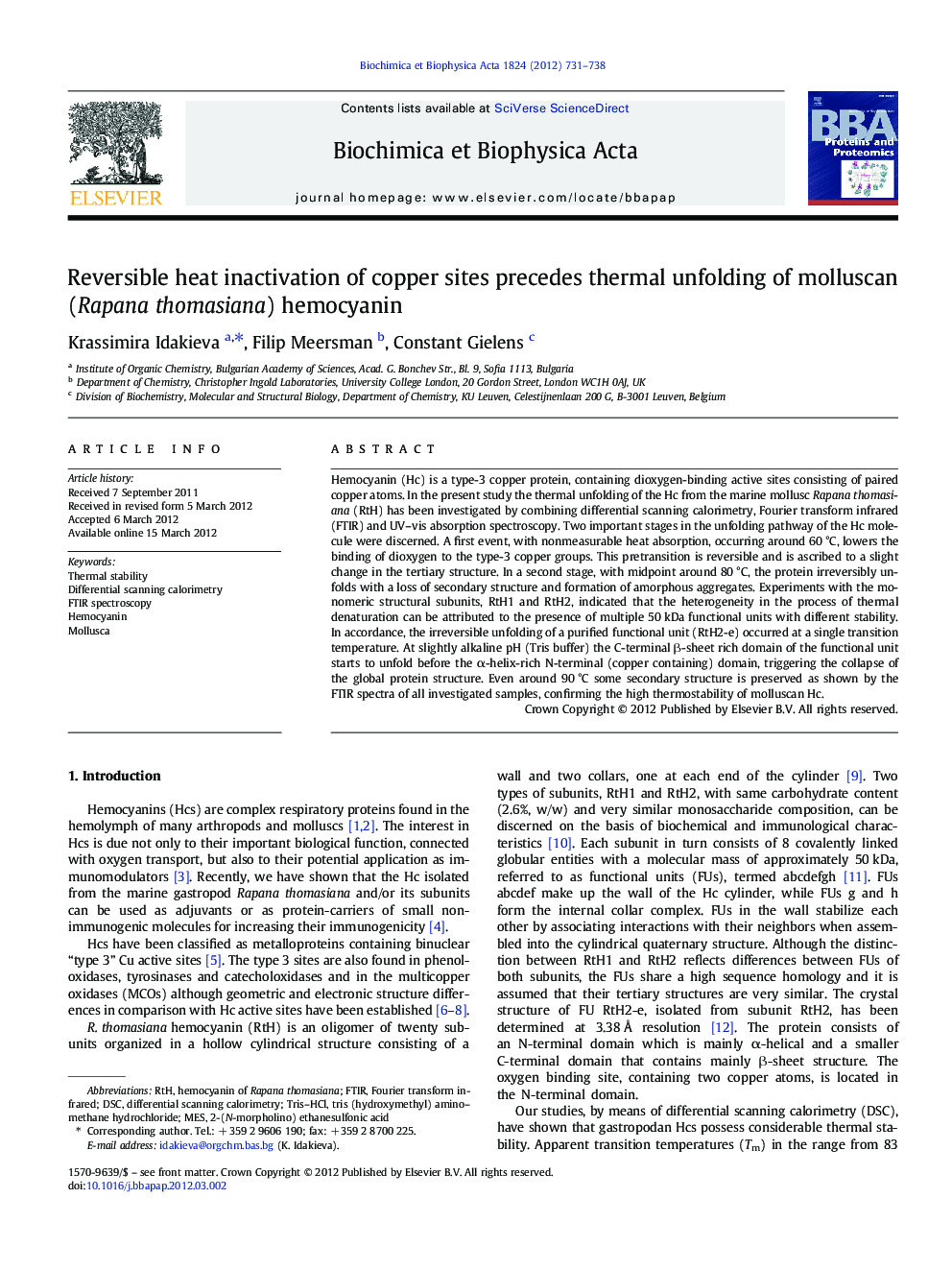| Article ID | Journal | Published Year | Pages | File Type |
|---|---|---|---|---|
| 1177779 | Biochimica et Biophysica Acta (BBA) - Proteins and Proteomics | 2012 | 8 Pages |
Hemocyanin (Hc) is a type-3 copper protein, containing dioxygen-binding active sites consisting of paired copper atoms. In the present study the thermal unfolding of the Hc from the marine mollusc Rapana thomasiana (RtH) has been investigated by combining differential scanning calorimetry, Fourier transform infrared (FTIR) and UV–vis absorption spectroscopy. Two important stages in the unfolding pathway of the Hc molecule were discerned. A first event, with nonmeasurable heat absorption, occurring around 60 °C, lowers the binding of dioxygen to the type-3 copper groups. This pretransition is reversible and is ascribed to a slight change in the tertiary structure. In a second stage, with midpoint around 80 °C, the protein irreversibly unfolds with a loss of secondary structure and formation of amorphous aggregates. Experiments with the monomeric structural subunits, RtH1 and RtH2, indicated that the heterogeneity in the process of thermal denaturation can be attributed to the presence of multiple 50 kDa functional units with different stability. In accordance, the irreversible unfolding of a purified functional unit (RtH2-e) occurred at a single transition temperature. At slightly alkaline pH (Tris buffer) the C-terminal β-sheet rich domain of the functional unit starts to unfold before the α-helix-rich N-terminal (copper containing) domain, triggering the collapse of the global protein structure. Even around 90 °C some secondary structure is preserved as shown by the FTIR spectra of all investigated samples, confirming the high thermostability of molluscan Hc.
Graphical abstractFigure optionsDownload full-size imageDownload high-quality image (105 K)Download as PowerPoint slideHighlights►Thermal unfolding of hemocyanin, a type-3 copper protein, has been investigated. ►Loss of the copper–oxygen band at 344 nm suggests local changes to the active site. ►This step is reversible up to ~ 71 °C and without measurable heat absorption. ►It precedes overall loss of structure as seen by DSC and FTIR spectroscopy.
